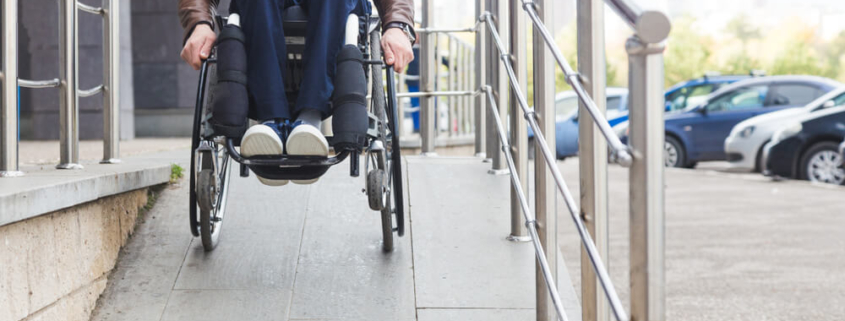How Wheelchair Ramps Can Be Dangerous
Disability rights have improved substantially in recent decades, but many people with disabilities still face accessibility issues in private and public facilities. In some cases, this is because of a complete lack of adaptive equipment. In others, it’s because the adaptive equipment is unsafe or unusable.
Consider wheelchair ramps: while they are an incredibly important part of public accessibility, that doesn’t mean that any wheelchair ramp is better than no ramp. Ramps must be built with specific usage and safety features in mind.
If you or someone you love has been injured in a wheelchair ramp accident, you may have a premises liability case, and be entitled to compensation. Call Peake & Fowler at 803-788-4370 to find out if you have a case.
Building Standards for Wheelchair Ramps
While many people with disabilities are well-informed with regard to ADA requirements, it’s rare for those outside the community to know what is required for different accommodations. Note, too, that ADA requirements only guide requirements for businesses, schools, and public buildings. While homes do not have to meet these building standards, it is recommended that they do so:
- A 1:12 ramp-slope ratio: For every one foot the ramp increases in height, there must be 12 feet of ramp.
- An unobstructed 5’ x 5’ area at the top and bottom of the ramp: This allows wheelchair users to easily get on and off of the ramp.
- Minimum width of 36 inches: Ramps in most states must be at least 36 inches wide. In California and Massachusetts, ramps must be at least 48 inches wide.
- Turn platform of at least 5’ x 5’: If there is a turning platform, it must be at least five feet in length and width.
- Guardrails that are between 34” and 38” tall: Guardrails are required on both sides of the ramp.
Steep Ramps Are Unsafe
Ramps that are steeper than the recommended 1:12 ratio are often unsafe for wheelchair users. Both manual and power wheelchair users may find it difficult to get up steeper ramps, which puts them at risk of sliding backward and losing control. In some cases, they may even run into people behind them, putting even more people in danger of becoming injured.
Watch Out for Ramps Without Guardrails
Makeshift ramps often lack guardrails or have guardrails that aren’t stable. Guardrails that easily fall off maybe even worse than no guardrails at all—if people expect the guardrails to hold, they may not be quite as careful as they would be on a ramp without any rails. Rails prevent falls. This is crucial because falls off of a ramp can leave wheelchair users without any way to get back onto the flat ground without the help of EMTs or firefighters.
Improper Building Materials Are Hazardous
The choice of materials is crucial when building a wheelchair ramp. Approved materials withstand heavy usage and inclement weather conditions without failing. However, wood can rot and weaken when exposed to the elements. This can also lead to warping which makes the ramp impassable.
Unfortunately, when a wooden ramp does go bad, it often does not become apparent until someone gets stuck on it. In the worst-case scenario, a wheelchair user can actually fall through the bottom of the ramp and need emergency help to get out.
Unfortunately, these accidents leave vulnerable people at risk of serious injury. That’s why it’s important to report ramp violations to the ADA and encourage those with wheelchair users in their homes to follow proper ramp building standards.
When an unsafe ramp causes someone to become injured, they may have legal options. With a personal injury claim, they can seek compensation from the property owner for the unsafe wheelchair ramp. Not only does this allow them to get compensation for their injuries, but it also encourages others to ensure that their ramps are safe.
Have You Been Injured on an Unsafe Wheelchair Ramp? Choose Peake & Fowler for Your Personal Injury Claim
Wheelchair ramp injuries can be very serious, especially for those who already have limited mobility. With a strong legal time at your side, you can hold the liable party accountable and demand fair compensation. Take the first step now by calling Peake & Fowler at 803-788-4370 or contacting us online.





